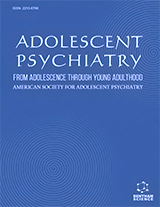Abstract
War is a major cause of traumatic stress for children and adolescents. German children who were born just before WWII experienced multiple stresses during and after the war. In addition to the losses and deprivations associated with the war, they had to face the shame of their country’s defeat and responsibility for the war, and many lived with the knowledge of their families’ complicity in the Nazi atrocities—something that was largely unacknowledged and never discussed. While in some cases, war trauma results in an ever-repeating cycle of violence, in others, the children who experience war are remarkably open to reconciliation and peace. While genocidal violence has recurred—in Cambodia, in Bosnia, in Rwanda, for example, there is hope that the children who live through these experiences can help to bring an end to these horrific events. The author offers his views on how the unique perspectives of these children can inform us. He describes his experiences and his observations of his contemporaries and peers who were children in Germany during World War II, and adolescents in the post-war era. Some of these children have led the way in the ultimate acknowledgement of individual and collective responsibility and in taking steps to ensure that the horrors of the genocide would not be repeated.
Keywords: Traumatic stress, children and war, Germany, World War II




























